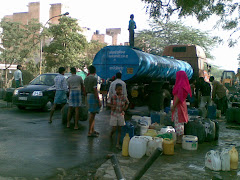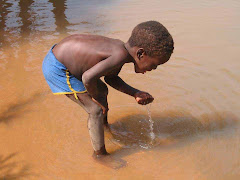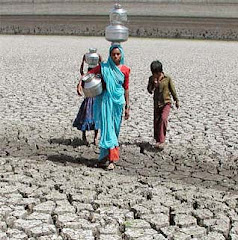After the discovery of water on moon, Indian scientists are looking at possibilities to tap the resource. For them, next on the agenda: transforming the lunar water that exists in vapour form into liquid state for utilizing it on Earth or using it for setting up human bases on the Moon.
A team of Indian scientists is reportedly studying ways and means to collect the lunar water after discovering the north and south poles of the Moon contained about one billion tonne of water or water-ice. Since the discovery of water in September 2009, scientists have announced that water is present on the Moon in vapour and ice form also.
Former Indian Space Research Organisation (ISRO) chairman G Madhavan Nair was quoted recently as saying, "As the water on Moon is mostly in its vapour and ice form, space scientists are studying scientific means of converting that into liquid water on the lunar surface itself".
Nair, a space scientist himself, was at the helm of ISRO's Chandrayaan-1 mission, India's first mission to the Moon.
Scientists believe discovery of water ice on the Moon is important as it can serve as a natural resource for astronauts on future lunar landing missions. The ice could also be melted into drinking water or be separated into its components of oxygen and hydrogen to provide breathing air and rocket fuel for launching interplanetary missions from the moon.
"Studies are being conducted to assess whether oxygen concentrators can be used for a similar process to liquidate the water vapour to have large quantities of liquid water in the challenging lunar environment", said Nair, adding that since exploitation of Moon and Mars for colonisation is the next step, plans are also being chalked out to reach there at an affordable cost.
News reports state that NASA has shown confidence that these vast sources of water on Moon could also be used to generate oxygen that could sustain human life in the lunar bases. Also, European Space Agency scientists are also reportedly studying the process of interaction between the hydrogen nuclei and oxygen present in the lunar dust grains to produce hydroxyls and water.
Nair said the next step could be to have ISRO's planned lander under Chandrayaan-2 taken to the Moon's polar region. "We could go further beneath the surface with appropriate instruments, and this time, it could be deeper than what Mini-Sar has managed. That will further seal all estimates we have made about water on the Moon. I believe getting to the spot and examining the area from deep under the surface could change all ways of thinking about the Moon", he added.
Subscribe to:
Post Comments (Atom)

.jpg)



No comments:
Post a Comment